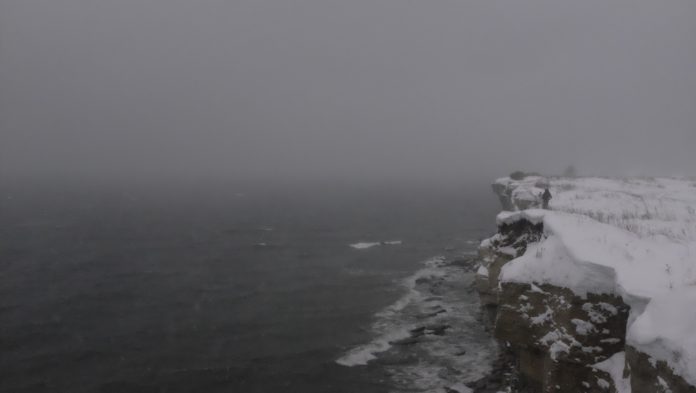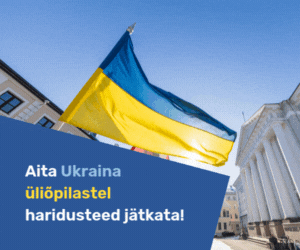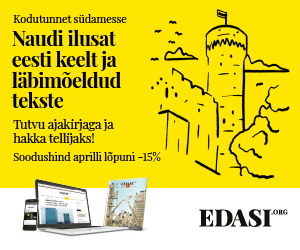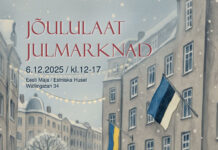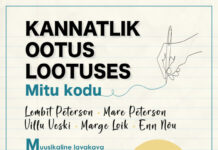In the year of Our Lord 1220, a Swedish fleet embarked on a crusade to Estonia, with the intent to conquer as much territory as possible. Not that there was much left to conquer: the Germans had already conquered most of Livonia, and the Danes had recently, in 1219, defeated the people in Northern Estonia. But there was still a sizeable amount of land in Western Estonia that was ruled by local chieftains and peasants. King Johan of Sweden wanted to make it Swedish.
The king himself was a young and inexperienced man, but he was not alone. His chief military commander was the earl, Karl the Deaf, and the earl’s nephew, Bishop Karl of Linköping, who also served as chancellor of the Swedish realm. The king, the earl and the chancellor quickly took hold of the old Estonian fortress of Leal, today known as Lihula, in the province of Rotalia, and made it their basis of operations. The fact that the German priest Hermann, a brother of Bishop Albert of Riga, was already living in Leal is a clear sign that many inhabitants of the region were already Christians, but this mattered little to the Swedish crusaders. Their main goal was not to spread the word of God but to build a colony.
Soon afterwards, the Swedes received warnings. Messengers from Riga told them to beware: although the mainland of Estonia was relatively peaceful, the Estonians were not to be trusted. There were still independent pagans around, and they were dangerous. King Johan’s men cared little about this. They thought that they were safe, and they began carving out territories for themselves. Believing the mission accomplished, King Johan returned home, leaving a garrison in the small castle of Leal.
This turned out to be a terrible mistake. On August 8, 1220, an Estonian fleet arrived from the island of Ösel, also known as Saaremaa. The Swedes were taken by surprise. Leal was surrounded by warriors and besieged. In the ensuing battle, hardly any Swedes survived. Both the earl and the chancellor were killed. The castle was re-taken and all that remained of Swedish rule was put to the torch. As a Danish force arrived on the scene, some time later, all that the Danes could do was to collect the corpses and bury them. All in all, about 500 Swedes died. The German chronicler Heinrich of Livonia concludes his brief treatment of the incident with the words “Blessed be their memory, and may their souls rest with Christ”. In the Livonian Rhymed Chronicle, the anonymous author is considerable harsher: als die katze mit der mûs / spilten die Oselêre, “as the cats do with mice, so did the people of Ösel play with the Swedes”.
In Swedish history, the battle of Leal is forgotten. There is no mention of it in our standard history books. Only experts of medieval history can tell the tale. However, these events, that occurred almost 800 years ago, deserve to be remembered, not for the sake of the Swedes but for the sake of the Estonians. In the battle of Leal, they won. The invaders were killed. The Swedes were driven out. Freedom was re-established. However, the triumph did not last long. Within the years that followed, both the province of Rotalia and the island of Ösel were subjected to foreign rule. The Germans and the Danes divided the lands between them, and in the end, a century later, the Germans took everything.
The process was similar in present-day Latvia. Beginning in the years around 1200, German crusaders crushed all resistance and partitioned the lands between the knights and the bishops. Only Lithuania remained independent, largely as a result of the intense pressure that the Western European crusaders put on the country. In order to survive, the many independent chiefdoms were united into a strong principality, whose leaders were quick to adopt the necessary military technology and tactics to defend themselves from the successive waves of Western attacks. In the fourteenth century, Lithuania was one of the most attacked nations of Europe – and one of the most successful. The wars transformed Lithuania into one of the mightiest and largest nations of the European continent, which eventually merged with the much smaller kingdom of Poland.
This is how it started – the long era of warfare, subjugation, rebellions and foreign rule. Estonia, Latvia and Lithuania were drawn into the West European cultural realm by force, not by choice. Eventually, all three nations were to be dominated by foreigners, and it would remain so for centuries. When the Teutonic Order, the German crusader state in Livonia and Prussia, disintegrated in the mid-sixteenth century, the region was torn to pieces by Russian, Polish, Danish and Swedish armies. Eventually, the entire region was partitioned between the Swedes and the Poles, who spent decades fighting each other for control of the Baltic coastline. The fact that the Swedish and the Polish kings were closely related, belonging to the same Vasa dynasty, and thus made their peoples suffer in their own family feud, made matters even worse. In the eighteenth century, both Swedes and Poles were driven away by the Russians, who conquered the entire territory and made it an integrated part of the empire of the Romanov dynasty.
And so on – for 800 years, Estonia, Latvia and Lithuania were either dominated and ruled by foreigners or constantly attacked and harassed by foreigners. In this, the region is unique, as far as Europe is concerned. Under normal circumstances, these three nations should not have been able to survive as ethnic and political entities. Warlike German crusaders, greedy Hanseatic merchants, bold Danish adventurers, wealthy Polish noblemen, unscrupulous Swedish administrators and tyrannical Russian officers all treated the peoples of the region as losers, as underdogs, as minions.
I am not saying that all of these rulers were bad. On the contrary, some rulers, such as Karl XI of Sweden, were efficient and far-sighted, doing whatever they could to promote the interests of the common man. But that is beside the point. If a people is given the choice to be ruled by foreigners or to be ruled by their own government, all the peoples of the earth would, without hesitation, agree on the latter. For 800 years, the Estonians and the Latvians were denied this right. While initially more successful, the Lithuanians were also subjugated to foreign rule for hundreds of years.
And still, the nations did survive. Not only that: the people of the Baltics learned from all the foreigners that came and went, and they prospered. They created cultures that displayed influences from all their neighbours, but that were still sufficiently rich and capable in their own right to be able to form the groundwork for three nation states.
A hundred years ago, in 1918, Estonia, Latvia and Lithuania became independent. But, as the history of the nations would demonstrate during the twentieth century, power and independence can never be taken for granted. Nor can democracy. It is not something you are given: it is something you take, something you earn. To break away from Russia in 1918 was not easy. The declarations of independence were not met with immediate approval in Moscow and Petrograd. On the contrary. The three nations were born out of the inferno that we know as World War I, one of the greatest tragedies of world history. If it had not been for the firm determination of the Estonians, Latvians and Lithuanians to establish their own nation states, their lands would undoubtedly have been occupied by someone else, such as Poland or the Soviet Union.
Returning to the early months of 1918, when independence was first declared, there were lots of bad omens. Most importantly, the victorious German army was advancing through Russia, occupying one province after another. There could be no real independence as long as the forces of Kaiser Wilhelm were in command. As in the case of Finland, the newly-founded states were satellites of Berlin. And worse was to come. When Germany was defeated in World War I and withdrew its troops, the Red Army invaded, forcing the inhabitants of the region to fight for their freedom with armies that previously had not existed. But that was not all. Another competing force was the Baltische Landeswehr, the armed forces of the German-speaking Couronian and Livonian nobility that tried to gain control over Latvia. Their troops had to be confronted with superior forces, or history would have been very different. In the case of Lithuania, there was also Poland to consider. In fact, the Lithuanians had to fight three wars of independence: against the Communists, against a German-Russian army under Cossack leadership and against Poland. While the first two wars ended in victory, Vilnius was lost and annexed to Poland.
And this was only the beginning. During the inter-war years, the three nations were forced to live in the shadow of two of the most evil empires the world has ever known, Stalin’s Russia and Hitler’s Germany – and there was no one there to help them. During World War II, totalitarian neighbours from both the west and the east attacked, occupied, subjugated and terrorized the population of the Baltics. As the war ended, no Western nation, no democratic state, stepped in to help the Estonians, the Latvians and the Lithuanians to re-establish their national independence. All three nations were victims of a process that produced no winners.
If a hypothetical alien had arrived from outer space with a mission to foresee the future of the European peoples, the alien in question would have shook his head when analyzing the future of the Estonians, Latvians and Lithuanians. Regardless of whether his point of view would have been the year 1200, or the year 1600, or the year 1939, the prospects would have been bleak. The peoples were too small, the neighbours too powerful, the warfare too disastrous.
And yet – here they are. The independence that was gained in 1918 proved to be lasting. The Soviet occupation turned out to be a parenthesis – a blood-stained parenthesis, alas, but still a temporal parenthesis, a thing of the past. Estonia, Latvia and Lithuania are still here – three vital, flourishing and proud republics, whose very existence is evidence of the fact that the future is not foreseeable, that the events to come are not determined by anonymous forces of history but by the actions of individuals and groups that believe in themselves.
Thus, the history of Estonia, Latvia and Lithuania is not only a tale of survival in the face of hopeless historical odds. It is also one of the prime examples in world history of men’s and women’s power and ability to change the course of time. It is a history that provides us with hope. Or, in the words of our previous prime minister, Tage Erlander: The human being does not have to be a plaything in the hands of anonymous economic laws and forces of technology. She can create her own future. But that presumes that she is well aware of the world, in which she works, and that she knows what she wants. That is the greatest lesson that history teaches us.
There is also another lesson to be learnt from the history of the Baltic Sea and the peoples living around it. Few Swedes are aware of it, but the fact is that many cities and villages on the Swedish coast were initially built as parts of defence structures against pirates from the other side of the sea, especially from Ösel and Couronia. In the twelfth century and the early thirteenth century, ancestors of present-day Estonians and Latvians continually harassed the shoreline of Eastern Sweden and carried off Swedish girls to slave-markets. In 1226, an Italian diplomat and bishop, Guglielmo of Modena, was shocked to witness the transportation of enslaved Swedish women to Ösel, where they were to be sold to ordinary Estonian peasants or re-exported to Latvia and Lithuania. This, Guglielmo was told, occurred every year, and it helped to explain why Swedish warriors sometimes made expeditions across the sea – they wanted revenge, or they wanted their women back.
Fear of pirates from the Baltics prompted the Swedes to transform their own cultural landscape in a way that is still evident to everyone who travels in our country. Churches were built with large and easily defended attics, where peasants could hide in the face of danger. Old Iron Age forts were reconstructed and put to new military use. Towers were raised at strategic locations. In fact, the city of Stockholm grew up around a defence tower, built in order to cut off pirates from the Baltic from the wealthy agricultural lands of Lake Mälar. Accordingly, the Teutonic knights fighting in Latvia and Lithuania found it easy to gain Swedish support and Swedish recruits. One of the most prominent Swedish noblemen of the thirteenth century, Karl Ulfsson, joined the Germans in their wars against Lithuania and died at the battle of Durbe in 1260. Not surprisingly, the German crusaders became large landowners in medieval Sweden.
But that is all in the past. In historical times, we – the peoples of the Baltic Sea – were often enemies. We were afraid of one another, and rightly so. Cultural exchanges in the hands of pirates, crusaders, generals and tax collectors often result in social climates characterized by cultures of fear, loathing and hate. We used to kill each other, enslave each other.
This is no longer so. I find it extremely unlikely that any Swede today would characterize Estonians, Latvians and Lithuanians as dangerous and hostile neighbours. The pirates are forgotten, as are the crusaders. If seen from this point of view, we – the people of today – are clearly better than our forefathers. We have learnt not only to prefer peace to war, but to regard peaceful coexistence and cooperation the natural state of things.
Like democracy and national independence, peace is not something that is handed out freely. It is something we must build ourselves, something we must construct and learn to believe in. In this, Sweden has been truly blessed. Our last war occurred in 1814, 204 years ago, when the Swedish army defeated the Norwegians in a campaign that lasted a couple of weeks and only resulted in the loss of about 800 soldiers, taken all together. Since then, we have lived in peace. Estonia, Latvia and Lithuania have not been as fortunate. Their recent history is, as I pointed out earlier, one of war, of tragedy and of the fight for national survival. But today, the very notion of a new war in the Baltic Sea would seem, to the vast majority of us, abhorrent as well as unrealistic.
In other words: a world without war is not merely an ideal, something to ponder and dream about in Christmas time, when listening to hymns about angelical choirs singing about peace on earth and good will to man. Peace, just like independence and democracy, has, for the first time in our history, become the norm.
And this fills me with great hope for the future.
Dick Harrison
2018-12-21 Tal i riksdagen med anledning av de baltiska staternas 100-års dag


